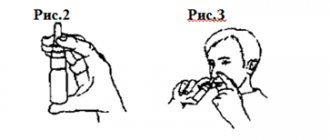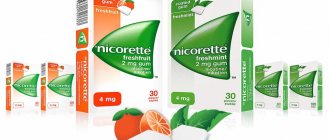Dezrinit
As with any treatment, patients using mometasone nasal spray dosage form for several months or longer should be periodically examined by a doctor for possible changes in the nasal mucosa.
It is necessary to monitor patients receiving intranasal corticosteroids for a long time. Possible development of growth retardation in children. If growth retardation is detected in children, it is necessary to reduce the dose of intranasal corticosteroids to the lowest that allows for effective control of symptoms. In addition, the patient should be referred to a pediatrician for consultation.
If a local fungal infection of the nose or pharynx develops, it may be necessary to discontinue therapy with mometasone in dosage form - dosed nasal spray and carry out special treatment. Irritation of the mucous membrane of the nose and pharynx that persists for a long time can also serve as a basis for discontinuing treatment with mometasone in dosage form - dosed nasal spray.
In placebo-controlled clinical studies in children, when mometasone in dosage form - nasal spray was used in a daily dose of 100 mcg for a year, no growth retardation was observed in children.
With long-term treatment with mometasone in the dosage form - nasal spray, no signs of suppression of the function of the hypothalamic-pituitary-adrenal system were observed.
Patients who switch to treatment with mometasone in dosage form - a dosage nasal spray after long-term therapy with systemic glucocorticosteroids require special attention. Withdrawal of systemic corticosteroids in such patients can lead to adrenal insufficiency, the subsequent recovery of which may take up to several months. If signs of adrenal insufficiency appear, systemic corticosteroids should be resumed and other necessary measures taken.
When using intranasal corticosteroids, systemic side effects may develop, especially with long-term use in high doses. The likelihood of developing these effects is much less than with the use of oral corticosteroids.
Systemic side effects may vary in individual patients and depending on the glucocorticosteroid drug used. Potential systemic effects include Cushing's syndrome, characteristic Cushingoid signs, adrenal suppression, growth retardation in children and adolescents, cataracts, glaucoma, and less commonly a number of psychological or behavioral effects including psychomotor hyperactivity, sleep disturbance, anxiety, depression, or aggression (especially in children).
During the transition from treatment with systemic glucocorticosteroids to treatment with mometasone nasal spray, some patients may experience initial symptoms of systemic glucocorticosteroid withdrawal (for example, joint and/or muscle pain, fatigue and depression), despite a decrease in the severity of symptoms. associated with damage to the nasal mucosa. If these signs appear, you should resume taking systemic glucocorticosteroids and take other necessary measures. Switching from systemic to topical glucocorticosteroids may also reveal pre-existing allergic diseases such as allergic conjunctivitis and eczema that were masked by systemic glucocorticosteroid therapy.
Patients treated with glucocorticosteroids have a potentially reduced immune responsiveness and should be warned of their increased risk of infection if exposed to patients with certain infectious diseases (eg, chickenpox, measles), as well as the need for medical advice if such exposure occurs .
If signs of a severe bacterial infection appear (for example, fever, persistent and sharp pain on one side of the face or toothache, swelling in the orbital or periorbital area), immediate medical consultation is required.
When using mometasone in dosage form - dosed nasal spray for 12 months, there were no signs of atrophy of the nasal mucosa. In addition, mometasone furoate tended to promote normalization of the histological picture when examining biopsy specimens of the nasal mucosa.
The effectiveness and safety of mometasone have not been studied in the treatment of unilateral polyps, polyps associated with cystic fibrosis, and polyps that completely occlude the nasal cavity.
If unilateral polyps of an unusual or irregular shape are detected, especially those that are ulcerated or bleeding, additional medical examination is necessary.
Visual disturbances have been reported with systemic and topical corticosteroid use. If a patient develops symptoms such as blurred vision or other visual disturbances, consider referring the patient to an ophthalmologist to evaluate possible causes, which may include cataracts, glaucoma, or rare diseases such as central serous chorioretinopathy (CSCR).

